Lenka Tětková
Large Vision Models Can Solve Mental Rotation Problems
Sep 18, 2025Abstract:Mental rotation is a key test of spatial reasoning in humans and has been central to understanding how perception supports cognition. Despite the success of modern vision transformers, it is still unclear how well these models develop similar abilities. In this work, we present a systematic evaluation of ViT, CLIP, DINOv2, and DINOv3 across a range of mental-rotation tasks, from simple block structures similar to those used by Shepard and Metzler to study human cognition, to more complex block figures, three types of text, and photo-realistic objects. By probing model representations layer by layer, we examine where and how these networks succeed. We find that i) self-supervised ViTs capture geometric structure better than supervised ViTs; ii) intermediate layers perform better than final layers; iii) task difficulty increases with rotation complexity and occlusion, mirroring human reaction times and suggesting similar constraints in embedding space representations.
Cat, Rat, Meow: On the Alignment of Language Model and Human Term-Similarity Judgments
Apr 10, 2025Abstract:Small and mid-sized generative language models have gained increasing attention. Their size and availability make them amenable to being analyzed at a behavioral as well as a representational level, allowing investigations of how these levels interact. We evaluate 32 publicly available language models for their representational and behavioral alignment with human similarity judgments on a word triplet task. This provides a novel evaluation setting to probe semantic associations in language beyond common pairwise comparisons. We find that (1) even the representations of small language models can achieve human-level alignment, (2) instruction-tuned model variants can exhibit substantially increased agreement, (3) the pattern of alignment across layers is highly model dependent, and (4) alignment based on models' behavioral responses is highly dependent on model size, matching their representational alignment only for the largest evaluated models.
From Colors to Classes: Emergence of Concepts in Vision Transformers
Mar 31, 2025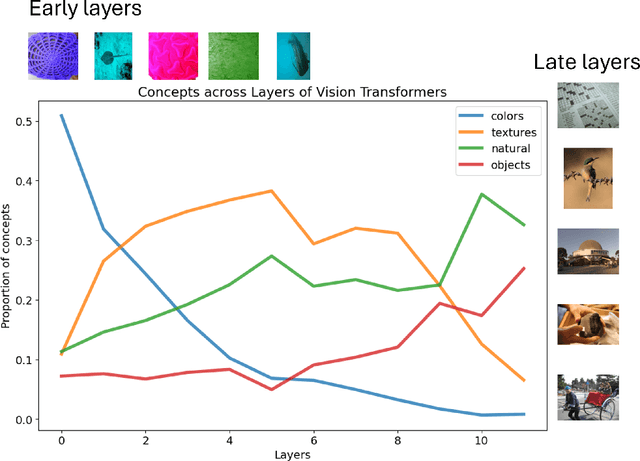
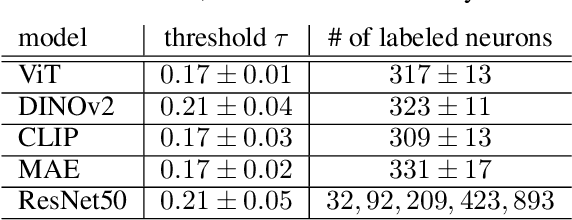
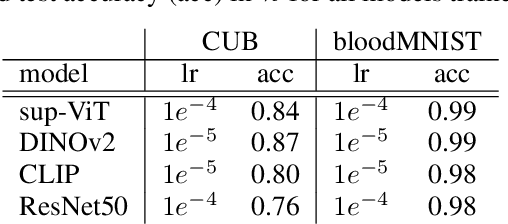

Abstract:Vision Transformers (ViTs) are increasingly utilized in various computer vision tasks due to their powerful representation capabilities. However, it remains understudied how ViTs process information layer by layer. Numerous studies have shown that convolutional neural networks (CNNs) extract features of increasing complexity throughout their layers, which is crucial for tasks like domain adaptation and transfer learning. ViTs, lacking the same inductive biases as CNNs, can potentially learn global dependencies from the first layers due to their attention mechanisms. Given the increasing importance of ViTs in computer vision, there is a need to improve the layer-wise understanding of ViTs. In this work, we present a novel, layer-wise analysis of concepts encoded in state-of-the-art ViTs using neuron labeling. Our findings reveal that ViTs encode concepts with increasing complexity throughout the network. Early layers primarily encode basic features such as colors and textures, while later layers represent more specific classes, including objects and animals. As the complexity of encoded concepts increases, the number of concepts represented in each layer also rises, reflecting a more diverse and specific set of features. Additionally, different pretraining strategies influence the quantity and category of encoded concepts, with finetuning to specific downstream tasks generally reducing the number of encoded concepts and shifting the concepts to more relevant categories.
Connecting Concept Convexity and Human-Machine Alignment in Deep Neural Networks
Sep 10, 2024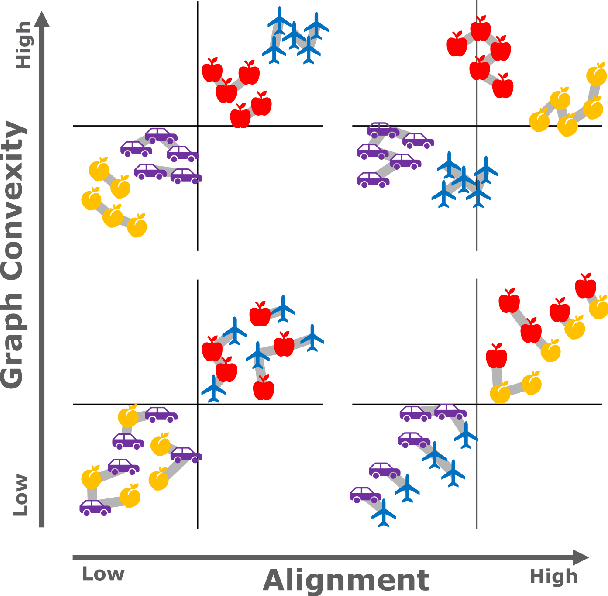
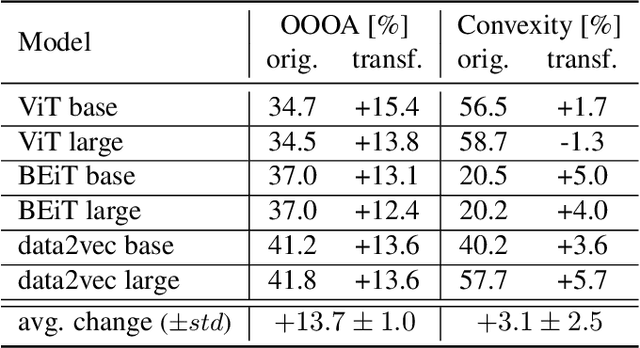
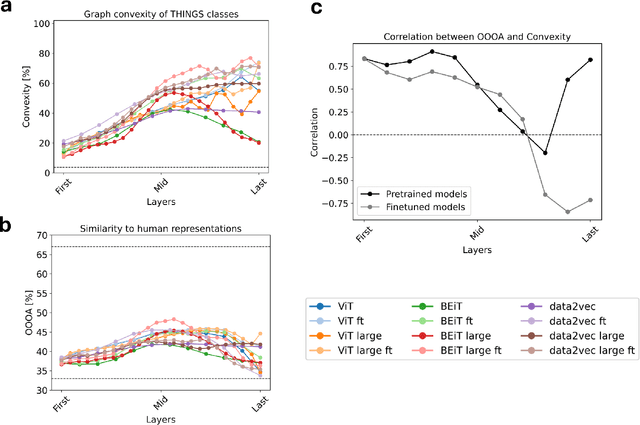
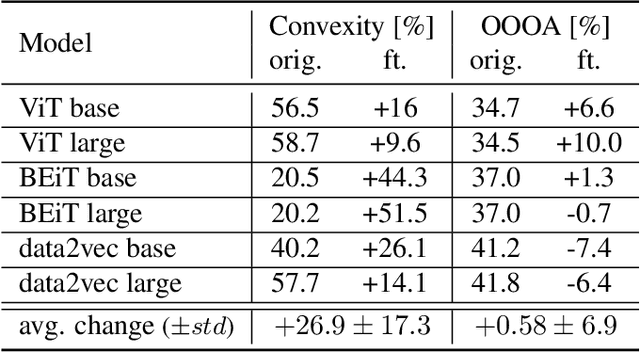
Abstract:Understanding how neural networks align with human cognitive processes is a crucial step toward developing more interpretable and reliable AI systems. Motivated by theories of human cognition, this study examines the relationship between \emph{convexity} in neural network representations and \emph{human-machine alignment} based on behavioral data. We identify a correlation between these two dimensions in pretrained and fine-tuned vision transformer models. Our findings suggest that the convex regions formed in latent spaces of neural networks to some extent align with human-defined categories and reflect the similarity relations humans use in cognitive tasks. While optimizing for alignment generally enhances convexity, increasing convexity through fine-tuning yields inconsistent effects on alignment, which suggests a complex relationship between the two. This study presents a first step toward understanding the relationship between the convexity of latent representations and human-machine alignment.
Convexity-based Pruning of Speech Representation Models
Aug 16, 2024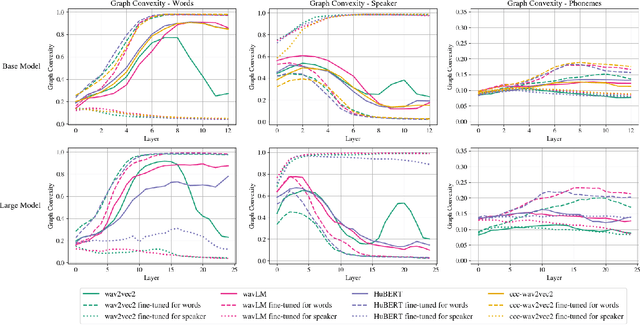

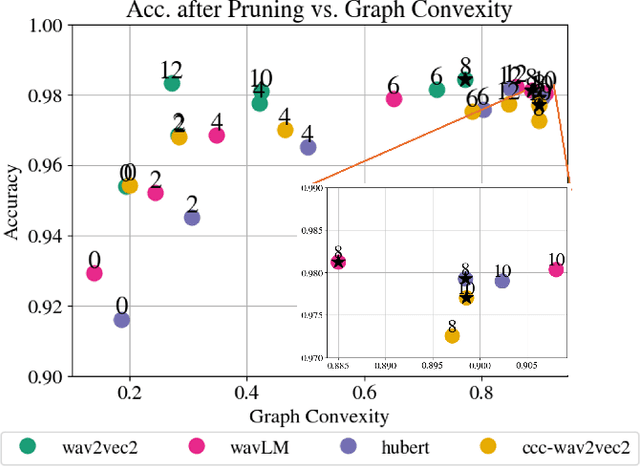
Abstract:Speech representation models based on the transformer architecture and trained by self-supervised learning have shown great promise for solving tasks such as speech and speaker recognition, keyword spotting, emotion detection, and more. Typically, it is found that larger models lead to better performance. However, the significant computational effort involved in such large transformer systems is a challenge for embedded and real-world applications. Recent work has shown that there is significant redundancy in the transformer models for NLP and massive layer pruning is feasible (Sajjad et al., 2023). Here, we investigate layer pruning in audio models. We base the pruning decision on a convexity criterion. Convexity of classification regions has recently been proposed as an indicator of subsequent fine-tuning performance in a range of application domains, including NLP and audio. In empirical investigations, we find a massive reduction in the computational effort with no loss of performance or even improvements in certain cases.
Challenges in explaining deep learning models for data with biological variation
Jun 14, 2024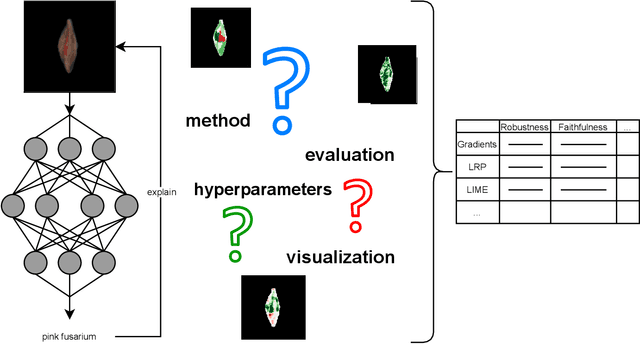
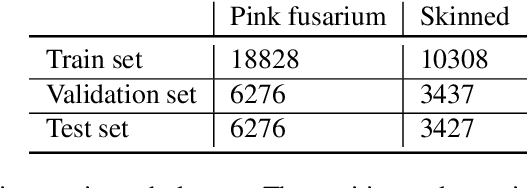

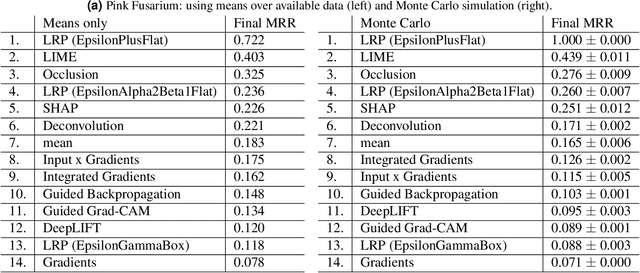
Abstract:Much machine learning research progress is based on developing models and evaluating them on a benchmark dataset (e.g., ImageNet for images). However, applying such benchmark-successful methods to real-world data often does not work as expected. This is particularly the case for biological data where we expect variability at multiple time and spatial scales. In this work, we are using grain data and the goal is to detect diseases and damages. Pink fusarium, skinned grains, and other diseases and damages are key factors in setting the price of grains or excluding dangerous grains from food production. Apart from challenges stemming from differences of the data from the standard toy datasets, we also present challenges that need to be overcome when explaining deep learning models. For example, explainability methods have many hyperparameters that can give different results, and the ones published in the papers do not work on dissimilar images. Other challenges are more general: problems with visualization of the explanations and their comparison since the magnitudes of their values differ from method to method. An open fundamental question also is: How to evaluate explanations? It is a non-trivial task because the "ground truth" is usually missing or ill-defined. Also, human annotators may create what they think is an explanation of the task at hand, yet the machine learning model might solve it in a different and perhaps counter-intuitive way. We discuss several of these challenges and evaluate various post-hoc explainability methods on grain data. We focus on robustness, quality of explanations, and similarity to particular "ground truth" annotations made by experts. The goal is to find the methods that overall perform well and could be used in this challenging task. We hope the proposed pipeline will be used as a framework for evaluating explainability methods in specific use cases.
Knowledge graphs for empirical concept retrieval
Apr 10, 2024Abstract:Concept-based explainable AI is promising as a tool to improve the understanding of complex models at the premises of a given user, viz.\ as a tool for personalized explainability. An important class of concept-based explainability methods is constructed with empirically defined concepts, indirectly defined through a set of positive and negative examples, as in the TCAV approach (Kim et al., 2018). While it is appealing to the user to avoid formal definitions of concepts and their operationalization, it can be challenging to establish relevant concept datasets. Here, we address this challenge using general knowledge graphs (such as, e.g., Wikidata or WordNet) for comprehensive concept definition and present a workflow for user-driven data collection in both text and image domains. The concepts derived from knowledge graphs are defined interactively, providing an opportunity for personalization and ensuring that the concepts reflect the user's intentions. We test the retrieved concept datasets on two concept-based explainability methods, namely concept activation vectors (CAVs) and concept activation regions (CARs) (Crabbe and van der Schaar, 2022). We show that CAVs and CARs based on these empirical concept datasets provide robust and accurate explanations. Importantly, we also find good alignment between the models' representations of concepts and the structure of knowledge graphs, i.e., human representations. This supports our conclusion that knowledge graph-based concepts are relevant for XAI.
On convex conceptual regions in deep network representations
May 26, 2023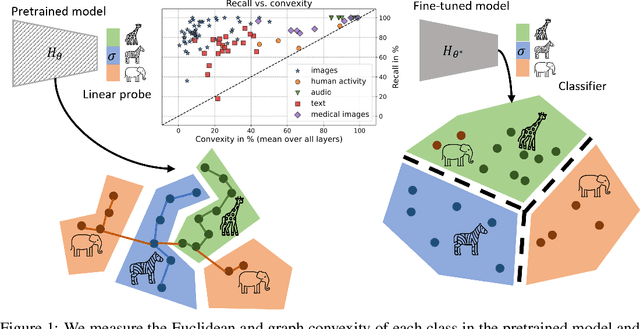

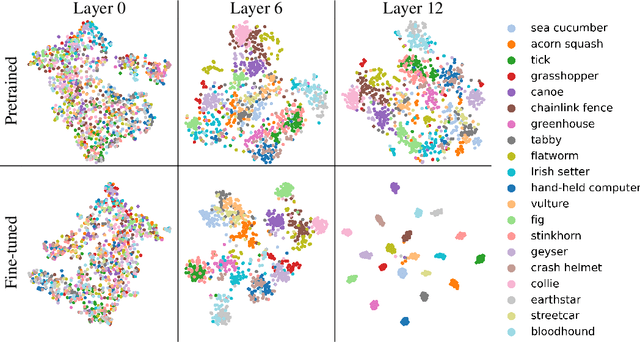
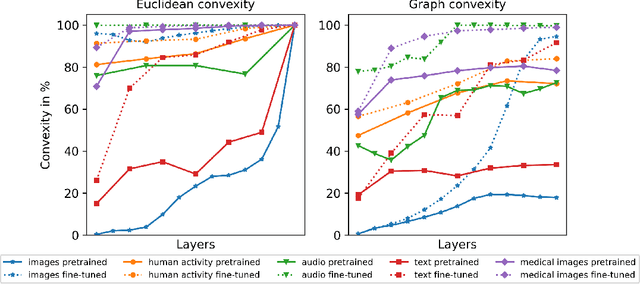
Abstract:The current study of human-machine alignment aims at understanding the geometry of latent spaces and the correspondence to human representations. G\"ardenfors' conceptual spaces is a prominent framework for understanding human representations. Convexity of object regions in conceptual spaces is argued to promote generalizability, few-shot learning, and intersubject alignment. Based on these insights, we investigate the notion of convexity of concept regions in machine-learned latent spaces. We develop a set of tools for measuring convexity in sampled data and evaluate emergent convexity in layered representations of state-of-the-art deep networks. We show that convexity is robust to basic re-parametrization, hence, meaningful as a quality of machine-learned latent spaces. We find that approximate convexity is pervasive in neural representations in multiple application domains, including models of images, audio, human activity, text, and brain data. We measure convexity separately for labels (i.e., targets for fine-tuning) and other concepts. Generally, we observe that fine-tuning increases the convexity of label regions, while for more general concepts, it depends on the alignment of the concept with the fine-tuning objective. We find evidence that pre-training convexity of class label regions predicts subsequent fine-tuning performance.
Robustness of Visual Explanations to Common Data Augmentation
Apr 18, 2023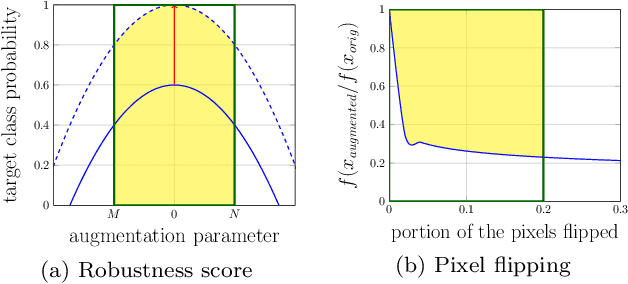

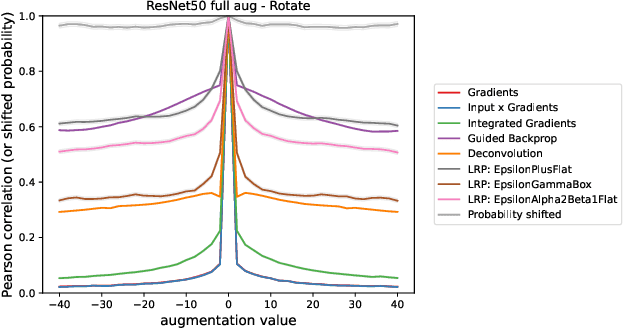

Abstract:As the use of deep neural networks continues to grow, understanding their behaviour has become more crucial than ever. Post-hoc explainability methods are a potential solution, but their reliability is being called into question. Our research investigates the response of post-hoc visual explanations to naturally occurring transformations, often referred to as augmentations. We anticipate explanations to be invariant under certain transformations, such as changes to the colour map while responding in an equivariant manner to transformations like translation, object scaling, and rotation. We have found remarkable differences in robustness depending on the type of transformation, with some explainability methods (such as LRP composites and Guided Backprop) being more stable than others. We also explore the role of training with data augmentation. We provide evidence that explanations are typically less robust to augmentation than classification performance, regardless of whether data augmentation is used in training or not.
 Add to Chrome
Add to Chrome Add to Firefox
Add to Firefox Add to Edge
Add to Edge